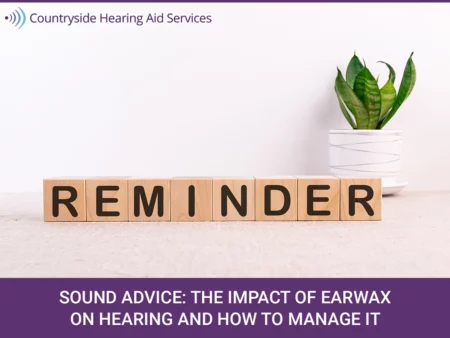
Managing earwax is particularly crucial for residents near Clearwater, FL, where beach activities can increase the likelihood of earwax buildup. Earwax, a natural substance produced by glands in the ear canal, plays a crucial role in protecting and cleaning our ears. However, excessive earwax buildup can lead to hearing problems, especially for hearing aid users. Proper management and safe removal of earwax are essential to maintain good ear health and the effectiveness of hearing aids.
Understanding Earwax and Its Impact on Hearing Aids
Earwax, or cerumen, traps dirt and dust, preventing them from reaching the eardrum. In normal circumstances, earwax gradually moves out of the ear canal and falls out or gets washed away. However, hearing aids can obstruct this natural process, leading to wax buildup. This accumulation not only reduces the effectiveness of the hearing aid but can also cause discomfort or even infection.
The Role of Earwax in Ear Health
Earwax serves several essential functions in maintaining ear health. It has antibacterial properties that help prevent infections in the ear canal. Additionally, its sticky nature captures small particles like dust and sand, which are prevalent in beach areas like Clearwater. Understanding the role of earwax can help individuals appreciate the importance of managing it properly.
Safe Earwax Removal Methods
- Consult a Professional: Before attempting any earwax removal at home, especially in the Clearwater, FL vicinity, it’s advisable to consult a healthcare professional. They can assess the situation and recommend the best course of action. Professionals may use tools like a wax spoon, suction device, or ear forceps for safe removal.
- Avoid Cotton Swabs and Small Objects: It’s crucial to avoid using cotton swabs or inserting any small objects into the ear canal, as these can push wax deeper and cause blockages or damage to the ear.
- Ear Drops: Over-the-counter ear drops can soften earwax, making it easier to remove. These drops often contain substances like mineral oil, baby oil, glycerin, or hydrogen peroxide.
- Ear Irrigation Kits: For some, at-home ear irrigation kits can be effective. These kits typically use a solution to soften the wax, followed by gentle flushing to remove the softened wax.
- Warm Water Flush: A gentle flush with warm water can also aid in removing softened earwax. This method is often used in conjunction with ear drops.
Hearing Aid Maintenance
- Establish a Daily Cleaning Routine: Daily cleaning of hearing aids is essential to prevent wax buildup. This includes wiping down the hearing aid with a dry cloth and using a soft-bristled brush to remove any visible wax.
- Clean the Earmolds: For hearing aids with earmolds, regularly cleaning the molds with mild soap and water can prevent wax accumulation.
- Use a Wax Removal Tool: Some hearing aids come with a specialized tool for wax removal. It’s essential to use this tool carefully to avoid damaging the hearing aid.
- Replace Wax Guards or Filters: Regularly replacing the wax guards or filters on your hearing aids can prevent wax from entering and damaging the device.
- Proper Storage: When not in use, store your hearing aids in a dry, safe place to prevent any wax from hardening or causing damage.
In conclusion, for those near Clearwater, FL, and surrounding areas seeking expert assistance in managing earwax and maintaining hearing aids, Countryside Hearing Aid Services stands out as a top choice. Renowned for their comprehensive hearing test services and extensive range of hearing aids, they serve numerous communities, including Palm Harbor, Largo, Dunedin, Safety Harbor, Oldsmar, and Tarpon Springs. With a longstanding reputation since 1979, Countryside Hearing Aid Services is dedicated to enhancing your overall wellness through the power of good hearing. For all your hearing and hearing aid needs, Countryside Hearing Aid Services in Clearwater, FL, is your go-to destination.
Picture Credit: 123rf.com